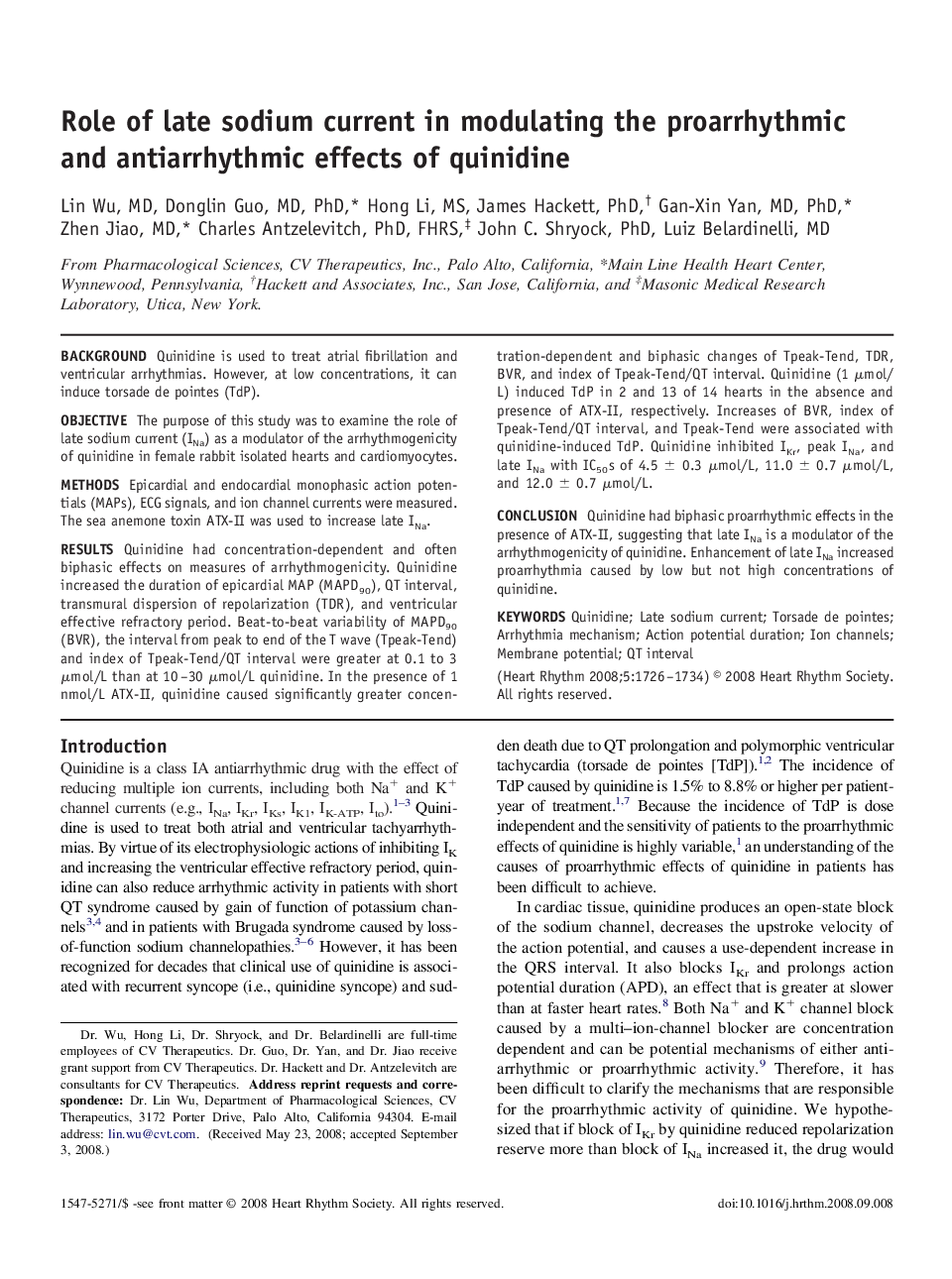| کد مقاله | کد نشریه | سال انتشار | مقاله انگلیسی | نسخه تمام متن |
|---|---|---|---|---|
| 2925106 | 1175929 | 2008 | 9 صفحه PDF | دانلود رایگان |

BackgroundQuinidine is used to treat atrial fibrillation and ventricular arrhythmias. However, at low concentrations, it can induce torsade de pointes (TdP).ObjectiveThe purpose of this study was to examine the role of late sodium current (INa) as a modulator of the arrhythmogenicity of quinidine in female rabbit isolated hearts and cardiomyocytes.MethodsEpicardial and endocardial monophasic action potentials (MAPs), ECG signals, and ion channel currents were measured. The sea anemone toxin ATX-II was used to increase late INa.ResultsQuinidine had concentration-dependent and often biphasic effects on measures of arrhythmogenicity. Quinidine increased the duration of epicardial MAP (MAPD90), QT interval, transmural dispersion of repolarization (TDR), and ventricular effective refractory period. Beat-to-beat variability of MAPD90 (BVR), the interval from peak to end of the T wave (Tpeak-Tend) and index of Tpeak-Tend/QT interval were greater at 0.1 to 3 μmol/L than at 10–30 μmol/L quinidine. In the presence of 1 nmol/L ATX-II, quinidine caused significantly greater concentration-dependent and biphasic changes of Tpeak-Tend, TDR, BVR, and index of Tpeak-Tend/QT interval. Quinidine (1 μmol/L) induced TdP in 2 and 13 of 14 hearts in the absence and presence of ATX-II, respectively. Increases of BVR, index of Tpeak-Tend/QT interval, and Tpeak-Tend were associated with quinidine-induced TdP. Quinidine inhibited IKr, peak INa, and late INa with IC50s of 4.5 ± 0.3 μmol/L, 11.0 ± 0.7 μmol/L, and 12.0 ± 0.7 μmol/L.ConclusionQuinidine had biphasic proarrhythmic effects in the presence of ATX-II, suggesting that late INa is a modulator of the arrhythmogenicity of quinidine. Enhancement of late INa increased proarrhythmia caused by low but not high concentrations of quinidine.
Journal: Heart Rhythm - Volume 5, Issue 12, December 2008, Pages 1726–1734